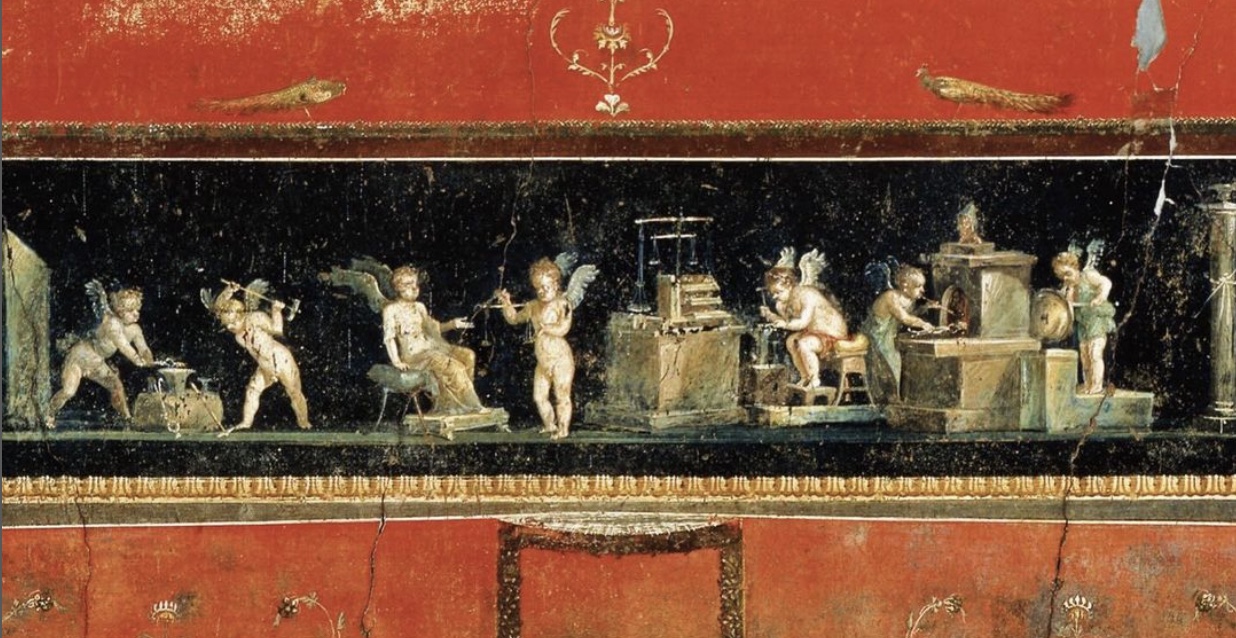Normally indolent pranksters, ever-rascally erotes have been pressed into service here, miniature figures shown gamely toiling within a black band running around the ruby red walls of a Pompeian dining room. They work in a wine storeroom surrounded by imposing transport amphorae, sell sundries, work gold, and count the proceeds of a lively trade

There’s a lot to be said about this particular house, ‘The House of the Vettii’, including its truly fantastic and diverse decorative program and the decades-long loving restoration that has just wrapped up to great fanfare. Apart from the striking jewel-like, miniature aesthetics of this particular frieze, I quite admire it because of the hints it gives about Pompeian social structure – a reminder that Pompeii might be an awe-inspiring treasure trove for modern archaeologists, but it was not a city inhabited by the cream of Roman society.
This particular luxe villa was owned (scholars think) by two men (possibly brothers) who were freedmen, meaning they were born as slaves, gained their freedom, and achieved considerable wealth as wine merchants. This upward mobility was a hallmark of the Pompeian story – one perhaps celebrated by scenes of these diligent lilliputian laborers.




